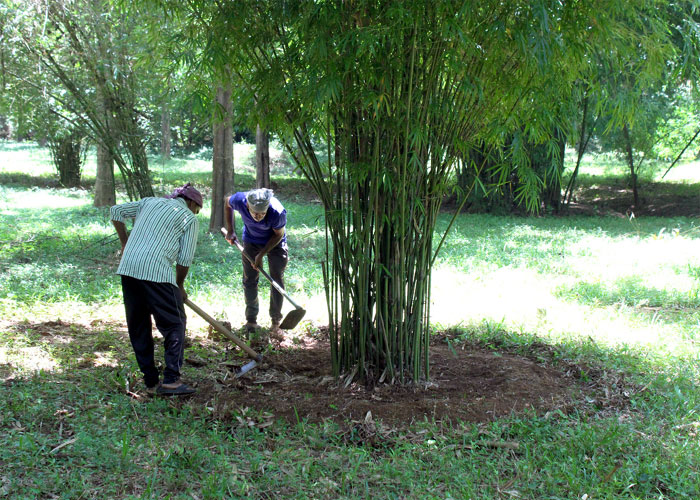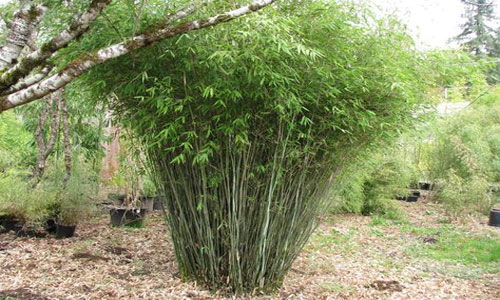Weed Control
Regular weeding is required during the first few years of the plantation to keep weeds and other vegetation from competing with the young bamboo for sustenance. It is recommended to remove weeds at least twice during each of the first two years, after the rains and towards the end of the wet season. This will help for the quicker establishment and faster growth of bamboo rhizomes.
The weed clearing and soil loosening can be done by ploughing the entire plantation to clear all the weeds and loosen the soil around bamboo clumps. Another option is spot weed control and soil loosening only around planted bamboo. In this method, clearing weeds in a radius of 1 to 1.5 meters around the bamboo clumps, with soil loosening starting from the plant to a distance of at least a 50-cm radius and up to a depth of 15 cm is employed.

Pruning
During the early maturity stage of 3-5 years, maintenance of clump congestion and coppicing are also essential to facilitate the harvesting of mature bamboo shoots. In running bamboos or bamboo with long-necked rhizomes, it is not a serious problem whereas, in short-necked clumping bamboos or species belonging to the genera Bambusa, Cephalostachyum, and Dendrocalamus, culm maintenance is required.
Pruning of lower branches can be done to prevent clump congestion, promote an airy environment, and facilitate ease in fertilization and harvesting. This is essential for species like Bambusa bambos, B. balcooa, B. nutans, and Dendrocalamus hamiltonii. etc., in which there is heavy branching at the lower nodes. Mild pruning can be undertaken from the second and third years of growth, and intensive pruning can be started from the fourth year onwards. December and January months are the ideal time for pruning.

Thinning & Maintenance
It is not desirable to keep weak and deformed culms in clumps and proper bunch structure should be maintained by thinning and pruning/retention. The dead culms are vulnerable to pathogens and also act as a potential fire hazard. Thinning can be started from year 3 or 4 of the plantation by removing dead, old, or damaged culms/poles and malformed culms. Usually, new shoots are produced towards the outer side, and those located in the inner portion are the older ones.
